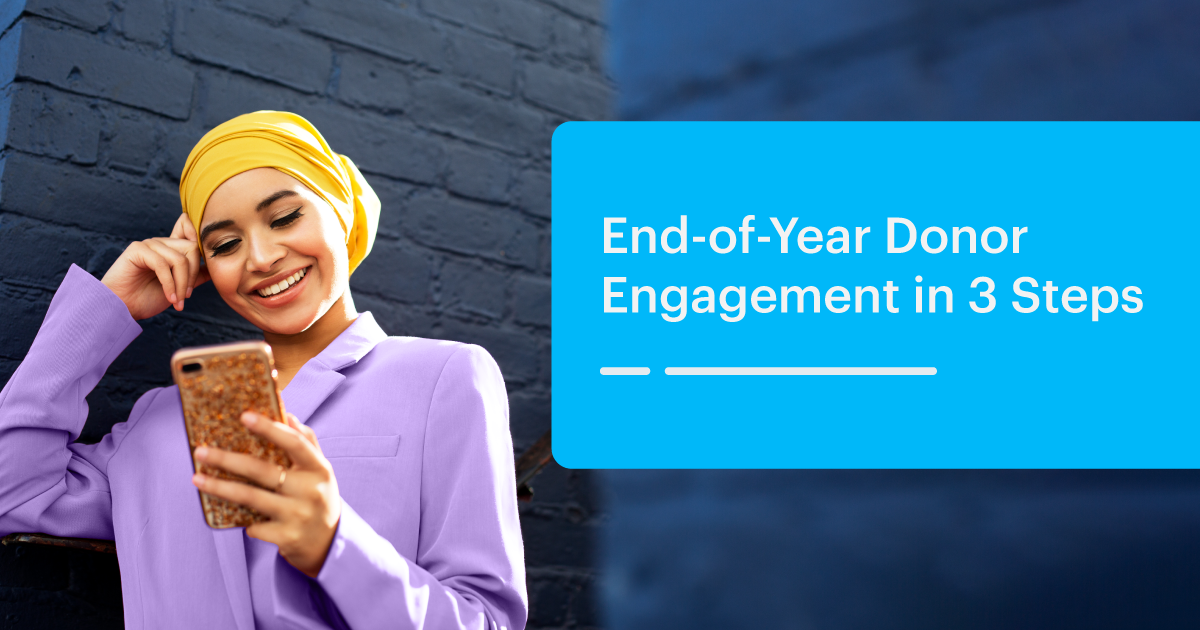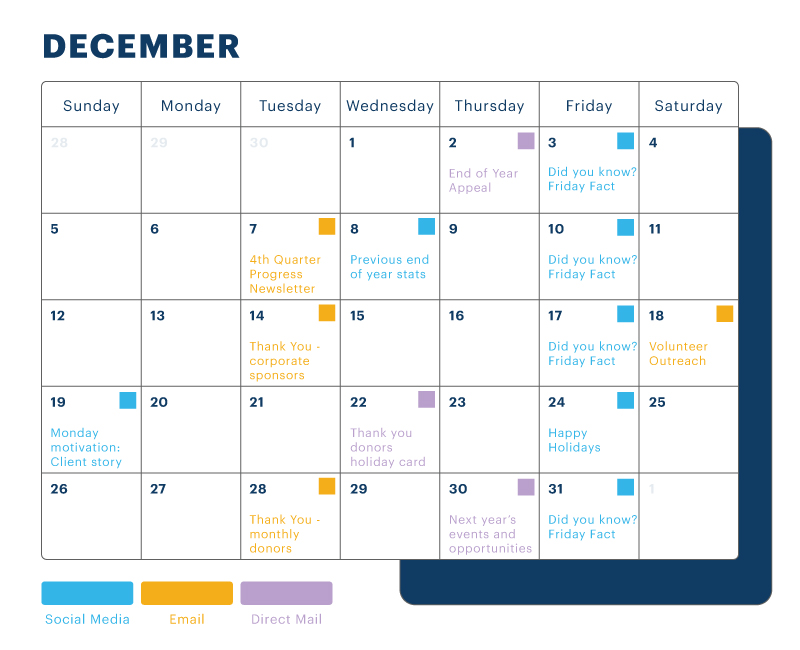
Nonprofit fundraisers, you’re coming up on another year of expecting the unexpected. In turn, you’ve started approaching your campaigns creatively. The unknown pushes you to be smart, quick, and confident on your first try. You don’t scare easily, and you’re up for a challenge.
As it stands, you only have a few weeks – and a limited budget – to button up your organization’s end-of-year appeals. This leaves only a few final shots at reaching donors, so let’s get you set up with a quick and effective end-of-year communication strategy you can start today.
Like getting ready for the holidays, you’ll want to take stock of last year’s collateral, wrap up gifts, and send greetings to friends near and far:
How to thrive under year-end pressure:
Review last year to “untangle the Christmas lights”
Many nonprofits raise half of their annual funds just from their year-end appeals. So the question is not if the last few days of the year will be fruitful, but how to give them your best shot. Using donor management software, you can shape your year-end strategy in a meaningful way – by measuring the year’s engagements as they relate to specific segments. Email marketing and online forms make these insights even easier to track.
Measure engagements by donor segment and communication channel:
- Which channels resulted in the highest amount of donations?
- Do your donor segments favor particular channels?
- Which subject lines resulted in the highest amount of opens?
- Which stories drove the most recipients to donate?
- Which donor segments gave the most?
- Did any particular days bring in a rush of donations?
- What aspects of your #GivingTuesday campaign can be carried into year-end?
It’s a good idea to note this information in a spreadsheet and make a list of takeaways to implement in your year-end campaign. It will come in handy again this time next year.
Wrap up your year-end communication strategy
To plan your year-end donor communications, create a timeline with clear objectives. There are so many avenues to cover – social media, blogs, emails, and letters – so spread out your communication to avoid bombarding your donors all at once. Keep your goals in mind while you plan what you’re going to send and when. Since there are only a few weeks left until the New Year, determine if it’s realistic for your goals to be reached within the allotted time.

What would your strategy look like if you start early next year?
Founder of Supporting World Hope, Sabrina Walker Hernandez, suggests using Giving Tuesday to kick off your end-of-year campaign. After Giving Tuesday, Sabrina recommends that organizations continue to engage individual donors on social media, but also move some donor communications “offline” – like face-to-face visits with top donors to ask them for larger amounts.
What does a multichannel approach look like?
Today, face-to-face doesn’t necessarily require risk or travel. “I network a lot. I love Zoom. I love LinkedIn. I love social media. I reach out to people and that’s how we connect,” Sabrina says. “To me, this is a face-to-face.”
Why wait until the new year to start new habits?
Brenda Helget, Director of A Time to Heal, customized her DonorPerfect system as a moves management tool to track donor communications. She logs every phone call and Zoom meeting in her Contact Manager – with notes that are accessible within each individual donor record and tasks that show up on her Organization Dashboard. Brenda also customized her system with donor cycle stages, so she can track the donor’s journey from cultivation to solicitation.
Make sure your seasonal greetings get read
Online and offline, it is helpful to inspire urgency in your donors, as you have limited time to get in your last donations of the year. Let them know you’re trying to reach a specific goal or manifest some tangible impact, and that they only have a few days to give, match gifts, do peer-to-peer fundraising, or make tax-deductible donations.
And even though today’s fundraisers don’t scare easily, it’s intimidating to write email subject lines and social media blurbs that will ensure readership in a small window of time.
Implement email marketing best practices to boost clicks:
- Creative email subject lines create interest and avoid Spam and Promotion filters. Constant Contact offers tips to help your emails stand out by adding contact details and emojis to your email subject lines.
- Try sending the same email with different subject lines to see which performs better.
- Inside, share stories that connect your supporter to the impact of their donations.
- Include actionable content, like a video appeal to make your email stand out.
- Constant Contact has found that the best time for nonprofits to send emails is on Tuesdays at 8:00 PM. While this is an industry standard, you can pay attention to your own data to find out what may work best for your donors.
What about the body copy of nonprofit end-of-year emails?
Melissa Sciacca, Executive Director of The David Sheldrick Wildlife Trust, leverages content as the focal point of her fundraising campaigns. “We connect our supporters to the work we’re doing on the ground in ways they can relate to,” she explains. “It takes a lot of effort to maintain that connection between our work in Africa and our donors in the States, but we create content that shows our mission as something people want to get behind.”
If you follow your instincts and point to your donor management system, end-of-year donations will come. This is the time to celebrate all you have accomplished this year, as you watch numbers rise with your team, looking forward to the year ahead. Happy fundraising, and have a happy New Year!





